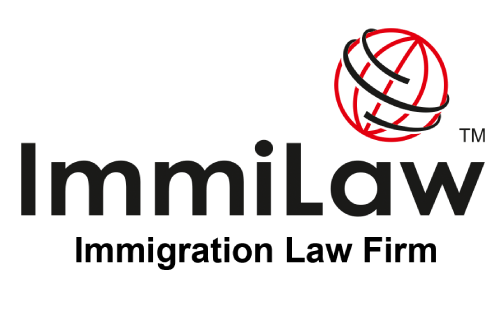Are you worried about your Post-Graduation Work Permit (PGWP) expiring soon? You can still stay and work in Canada by applying for a Temporary Foreign Worker Program (TFWP) work permit.
A TFWP permit allows you to work for a specific employer willing to support your application. To get started, you need a job offer from an employer who can apply for a Labour Market Impact Assessment (LMIA).
In this article, we will explore how to transition from a PGWP to a TFWP work permit. It covers what an LMIA is, current restrictions, how to approach employers, the steps for conducting an LMIA, exceptions to advertising requirements, the application process, timelines, and the Global Talent Stream for faster processing.
How to get a Temporary Foreign Worker Program (TFWP) Work Permit?
To secure a TFWP work permit, you must follow several essential steps.
- Obtain a job offer from an employer in Canada.
- Ensure your employer is prepared to apply for an LMIA.
- Secure a positive or neutral LMIA from Employment and Social Development Canada (ESDC)
- Avoid working for companies or occupations ineligible for LMIA processing, as per federal restrictions.
Note: LMIAs are valid for six months, and you will need a new LMIA to renew your TFWP work permit.
About the Labour Market Impact Assessment (LMIA)
A Labour Market Impact Assessment (LMIA) is a document issued by Employment and Social Development Canada (ESDC) to Canadian employers before they can hire foreign workers.
LMIA proves that hiring a foreign worker won’t negatively affect the Canadian job market because no local workers are available for the role. Employers must advertise the job and show recruitment efforts.
If ESDC determines that the effect is positive or neutral, it grants a positive LMIA, allowing the employer to proceed with hiring.
With a validity of six months, the LMIA must be renewed to extend a TFWP work permit. Changes in immigration policies have made the LMIA process stricter, posing challenges for employers and foreign workers. It’s crucial to understand these requirements and update yourself with evolving immigration policies.
What are the Current Restrictions on LMIA Processing in Canada?
IRCC has recently implemented significant changes to Canada’s immigration policies, particularly affecting the Temporary Foreign Worker Program (TFWP).
The federal government currently does not process LMIA applications in several specific situations, which include the following:
- Low-wage positions in areas with an unemployment rate above 6%.
- Jobs that exceed the cap on low-wage positions within a company
- In-home caregiver roles that require live-in arrangements
- Applications from employers who had an LMIA revoked in the past two years.
- Certain low-wage positions in Montreal and Laval until November 3.
- Companies flagged as ineligible by IRCC or those operating in the adult entertainment industry.
Approaching an Employer About LMIA Support
When discussing LMIA support with an employer, it’s essential to be clear and proactive. Here’s how you can approach the conversation:
- During job interviews: Mention the remaining time on your Post-Graduation Work Permit (PGWP) and ask if the company is open to supporting you with an LMIA.
- If already employed: Have a direct conversation with your employer about their willingness to assist with an LMIA. Address any concerns they may have and offer to help with the application process or provide necessary information.
- Plan ahead: Begin the LMIA process early, as it can take time to complete, and delays may affect your work permit application timeline.
As of January 2025, LMIA processing times vary depending on the stream, with the high-wage stream averaging 68 days and the low-wage stream averaging 76 days.
What are the Steps to Obtain an LMIA?
To secure a Labour Market Impact Assessment (LMIA), employers in Canada must follow a structured process:
- Determine the National Occupational Classification (NOC) code and wage rate for the position and select the appropriate LMIA stream.
- Advertise the job position as required by the LMIA stream, typically for a minimum of 30 days.
- Gather all necessary documents, including completed forms, proof of recruitment efforts, and business legitimacy documents such as tax records and licenses.
- Create a Job Bank for Employers account to access LMIA Online, where the application can be filled out and submitted.
- Pay the processing fee of CAD 1,000 and submit the application up to six months before the expected job start date.
Once submitted, ESDC evaluates the LMIA application, focusing on factors such as recruitment efforts, wage standards, and economic benefits. During the review process, employers may be asked for additional information or even required to attend a meeting. After completing the assessment, ESDC communicates its decision to the employer, indicating whether the application has been approved or denied.
When applying for an LMIA, employers are usually required to advertise the job to show that they’ve tried recruiting workers from Canada. However, there are certain situations under the Temporary Foreign Worker Program (TFWP) where this advertising requirement is either waived or modified depending on the nature of the position. These exceptions make it easier for employers to hire foreign workers in specific roles or industries.
Who Qualifies for LMIA Exemptions in Canada?
- Workers covered by international agreements between Canada and other countries may be exempt from the LMIA requirement.
- Employees transferred within multinational companies.
- Foreign workers with reciprocal opportunities for Canadians abroad.
- Entrepreneurs or self-employed business owners
- Francophone workers hired outside Quebec.
- Individuals are granted exemptions for humanitarian considerations.
You may also check here for variations to the advertising requirements.
How to Apply for a TFWP Work Permit
After receiving a positive or neutral LMIA and a job offer from the employer, the worker can begin the process of applying for a TFWP permit.
Here’s the steps involved:
- Create an account with IRCC and log in to start the application.
- Upload the documents as per the checklist, like the Job offer and LMIA, Proof of meeting job requirements, Language proficiency test results, Valid passport, and proof of funds.
- Answer the questions and complete the application form.
- Pay CAD 155 for work permit fees. If biometrics are required, pay the additional cost for fingerprints and photos.
How Long Does It Take to Transition from PGWP to TFWP Work Permit?
Moving from a Post-Graduation Work Permit (PGWP) to a Temporary Foreign Worker Program (TFWP) work permit involves several steps. Each step has its timeline.
| Stage | Description | Estimated Timeline |
| 1. Job Advertising | The employer must advertise the position to meet recruitment requirements. | 30 days |
| 2. LMIA Processing | The employer submits the LMIA application to ESDC, with varying processing times based on wage stream. | 76 days for low-wage stream 68 days for high-wage stream |
| 3. Work Permit Application | After receiving a positive LMIA, the foreign worker applies for a work permit with IRCC. | 114 days |
| Total Processing Time | From job advertisement to work permit approval. | 220 days for low-wage stream 212 days for high – wage stream |
As shown in the table, the entire process can take approximately six to eight months. To avoid any gaps in employment, individuals should start this process eight to ten months before their PGWP expires. This proactive approach ensures that all necessary steps are completed promptly, allowing a smooth transition from PGWP to the TFWP permit.
Maintained Status for Work Permit Holders in Canada
Maintained status allows individuals to remain in Canada legally even after their current permit expires, as long as they have applied for an extension or a new permit before the expiration date.
They can continue to work or study under the same conditions as their previous permit until a decision is made on their new application.
Maintained status provides a safety net for individuals transitioning between permits, ensuring they can remain in Canada and continue working legally during the application process.
However, you will benefit from maintained status only if you remain in Canada.
Global Talent Stream: A part of TFWP
The Global Talent Stream (GTS) is part of Canada’s Temporary Foreign Worker Program (TFWP). It helps employers in Canada quickly hire skilled foreign workers.
Employers in Canada can get LMIA approvals within 10 business days. If a company qualifies for the GTS, it can bypass the job advertising requirement, streamlining the hiring process.
There are two categories under the GTS:
- For individuals hired by employers referred by designated referral partners who possess unique and specialized skills that can help the company grow.
- Category B: For individuals hired for positions listed on the Global Talent Occupations List with employers who meet GTS requirements.
Although the GTS provides temporary work permits, it can lead to permanent residency opportunities through Canadian Experience Class or Provincial Nominee Programs after gaining Canadian work experience.
The Global Talent Stream helps Canadian companies fill critical skill shortages and supports foreign workers in establishing their careers in Canada.
By understanding the application process, timelines, and eligibility requirements, you can effectively navigate the transition from a Post-Graduation Work Permit (PGWP) to a Temporary Foreign Worker Program (TFWP) work permit.
It’s essential to act promptly and ensure that your employer is prepared to support your LMIA application. With careful planning and timely submissions, you can maintain your legal status in Canada and continue to build your professional journey without interruption.
Remember, seeking guidance from immigration professionals can also help clarify any uncertainties and enhance your chances of a successful application.
Contact us for a detailed consultation for a smooth transition as you continue your career in Canada.
Read to Know: Bridging Open Work Permit (BOWP): Who’s Eligible & How It Works


